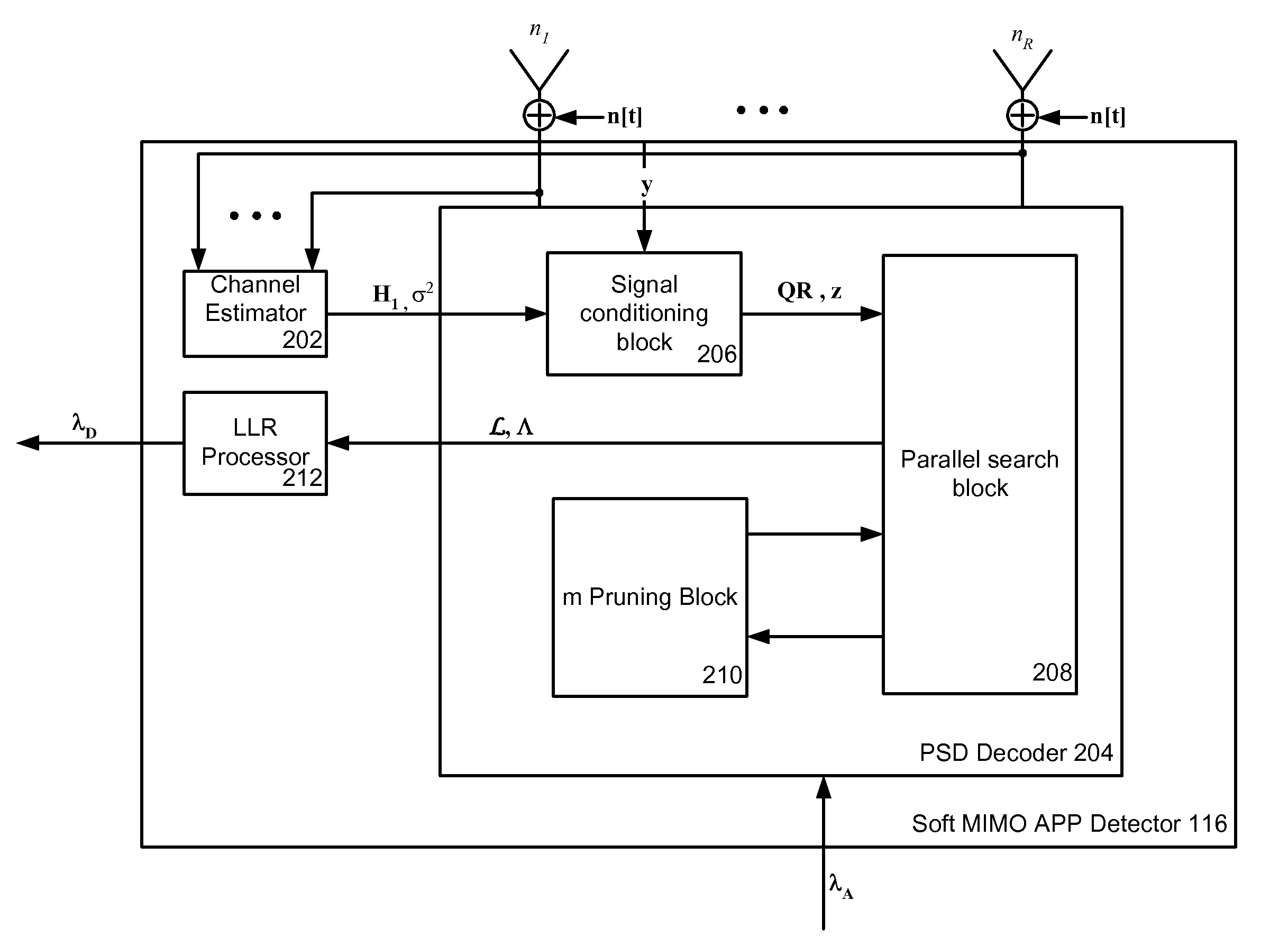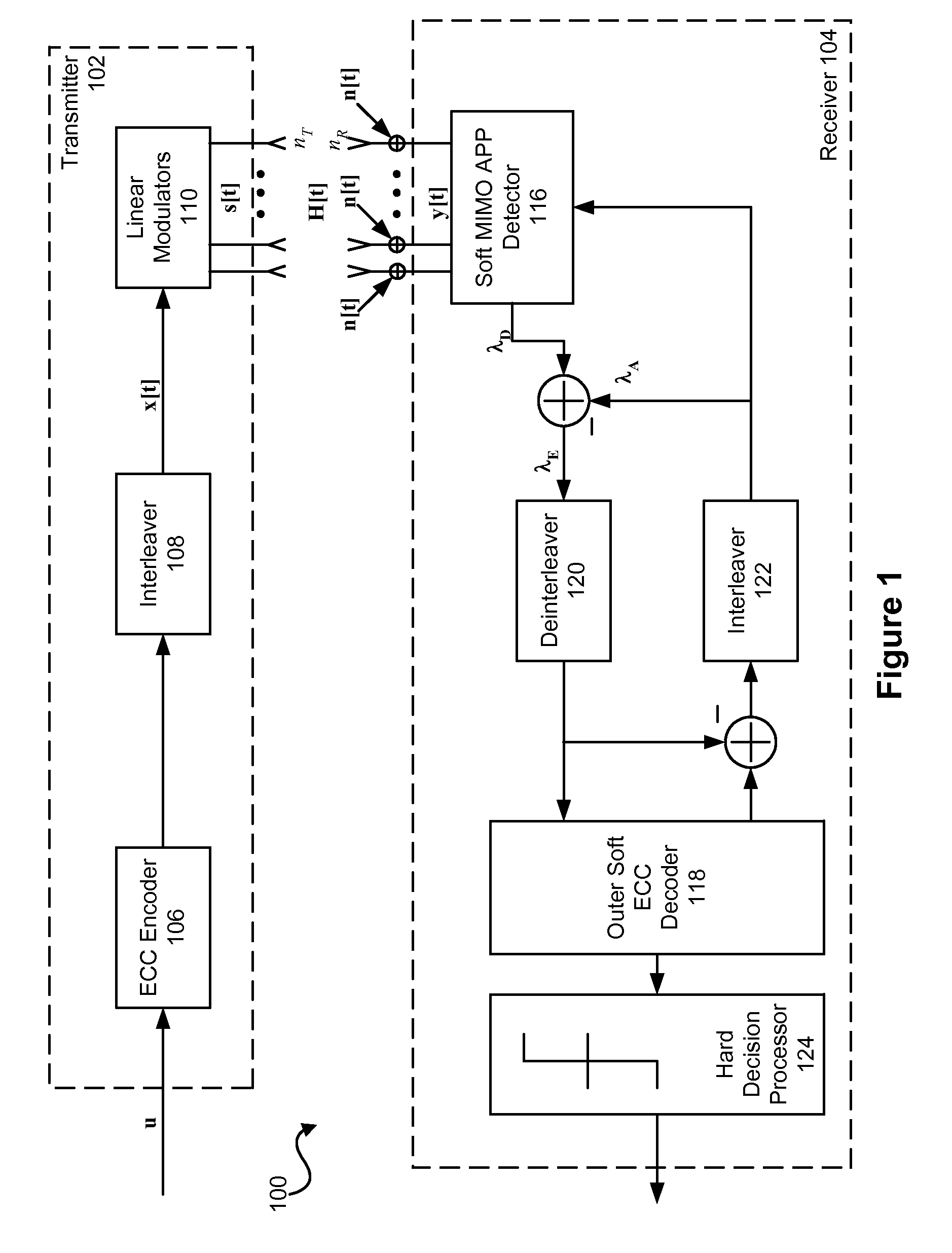Parallel soft spherical MIMO receiver and decoding method
a soft spherical, receiver technology, applied in the field of wireless communication, can solve the problems of inability to detect the performance of simple detection schemes, inability to detect the performance of a maximum likelihood (ml) detector, and inability to suggest a method for separating users multiplexed over multiple transmit antennas
- Summary
- Abstract
- Description
- Claims
- Application Information
AI Technical Summary
Benefits of technology
Problems solved by technology
Method used
Image
Examples
Embodiment Construction
[0030]Generally, the present invention provides a method and system for parallel decoding of multiple signals. The invention provides a low-complexity list MIMO detector that combines sphere decoding and m-algorithm approaches, while accounting for the effect of the specific channel realization on the decoding operation. Taking into account the channel condition effectively controls the size of the search tree, and consequently the search complexity, in an adaptive manner. The channel condition is exploited in the construction of the tree to manage the number of branches in the tree and to avoid undesirable growth. A method for searching the tree structure using lattice decoding in parallel, while limiting the complexity by discarding unnecessary paths in the tree, together with methods for parallel iterative decoding / de-mapping of users, including the case occurring in the uplink of an SDMA system, is provided.
[0031]More particularly, a sub-optimum a posteriori probability (APP) de...
PUM
 Login to View More
Login to View More Abstract
Description
Claims
Application Information
 Login to View More
Login to View More - R&D
- Intellectual Property
- Life Sciences
- Materials
- Tech Scout
- Unparalleled Data Quality
- Higher Quality Content
- 60% Fewer Hallucinations
Browse by: Latest US Patents, China's latest patents, Technical Efficacy Thesaurus, Application Domain, Technology Topic, Popular Technical Reports.
© 2025 PatSnap. All rights reserved.Legal|Privacy policy|Modern Slavery Act Transparency Statement|Sitemap|About US| Contact US: help@patsnap.com



